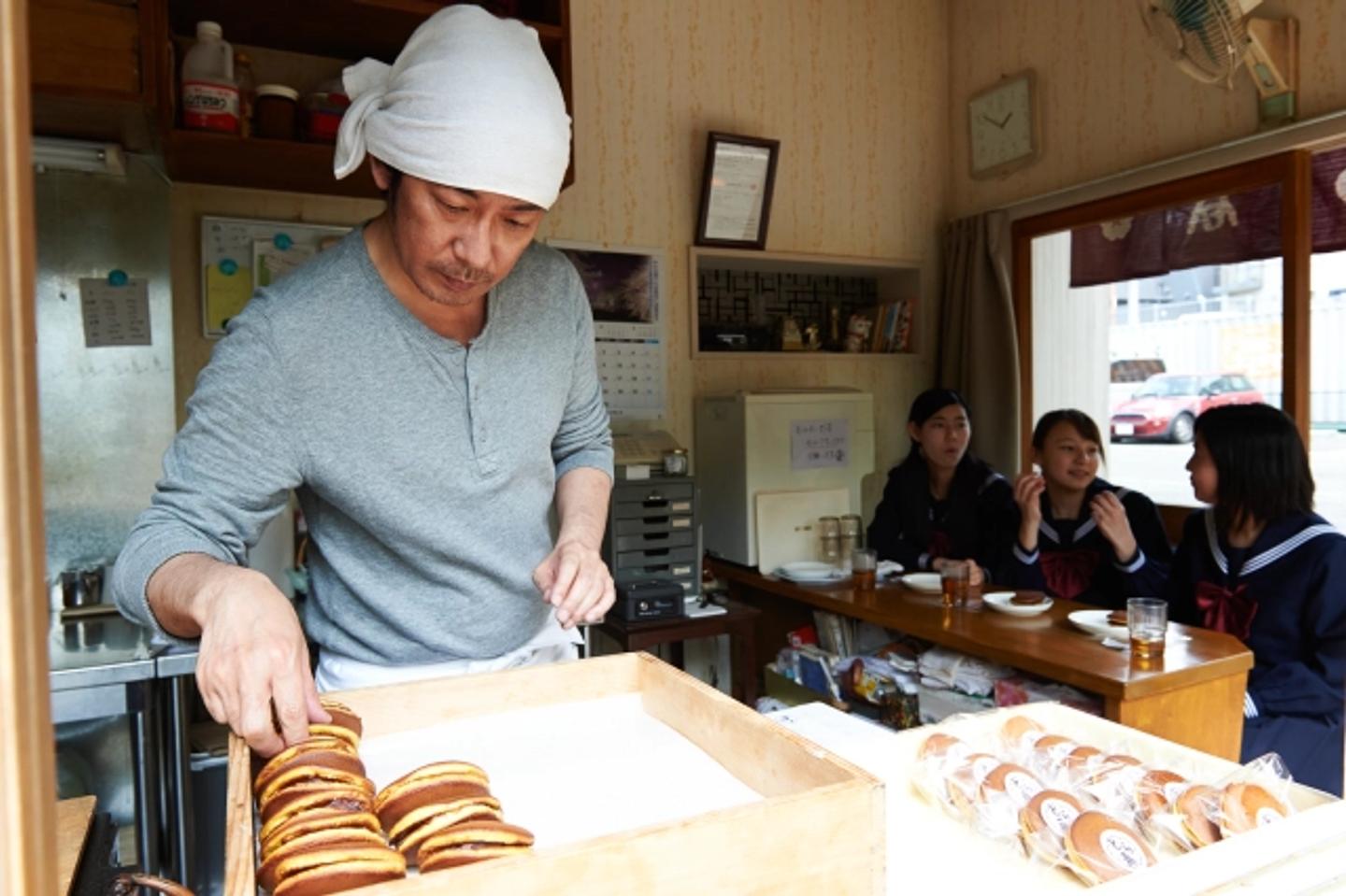

As winter sets in with its cold, rainy days, a unique urge arises—the desire to be nestled somewhere warm and cosy, sipping tea or hot chocolate, enjoying snacks, and watching a good film. In this spirit, I’d like to bring Sweet Bean (2015) into the conversation, a film directed by Japanese filmmaker Naomi Kawase and premiered in Cannes.
Kawase is celebrated for her poetic, introspective, and visually rich storytelling, blending documentary techniques with narrative style to explore themes like memory, loss, and the human connection to nature. And, in this case, food. Sweet Bean follows the story of Sentaro (Masatoshi Nagase), a struggling baker whose dorayaki shop is failing due to his lacklustre pastries. However, his fortune begins to change when a retired elderly woman named Tokue (Kirin Kiki) approaches him seeking a part-time job. Initially reluctant, Sentaro eventually hires her, and is soon surprised to see Tokue’s secret sweet bean paste recipe quickly drawing in more customers, with lines forming out the door.
The beauty of Sweet Bean lies in Kawase’s nuanced exploration of inter-generational knowledge-sharing and food’s role in bridging gaps between strangers to foster acceptance and connection. Through her characteristic ‘slow’ takes, she captures the meditative art of making dorayaki—from crafting the sweet bean paste to baking the pastries—imbuing each sequence with a serene, almost reverent quality. Kawase’s mise-en-scène draws viewers into this careful process, cultivating a shared intimacy between the characters and audience that embodies the film’s central theme of quiet, transformative connection.
The natural world is also woven into Sweet Bean's storytelling, with wide shots capturing a cherry tree in bloom, morning sunlight filtering through branches, and the sounds of wind and birds at dawn. These elements build a poetic and introspective atmosphere that permeates the film. Nature becomes an active presence. Though the viewer cannot smell the film, they get a sense of how the fragrance of cherry blossoms mingles with the scents of the kitchen. Similarly, the brisk spring wind seems to propel the characters' actions, enriching each moment with a sensory fullness.
The natural world gives space to cooking, for to cook is to be part of nature, embracing the ingredients, and balancing their interactions through heat, guided by the senses. Or at least that is how I feel while watching it. Personally, my favourite parts are those in which they cook and prepare the sweet bean paste.
Although fictional, the kitchen sequences evoke an observational documentary style, with minimal camera movement which illicits a yearning for stillness. As wooden spoons stir the gluey paste in traditional copper pans, Kawase builds her characters’ identities through the act of cooking. Through minimal dialogue, focused gestures, and what Tokue refers to as “hearing the beans;” the film evokes moments that linger with the audience long after viewing. And though there’s more to the story than simply making dorayaki; to discover its nuances, one must experience the film firsthand. And, since this film beautifully captures acts of care, it is all the more special to watch with someone you care about.
This article is a contribution from one of the participants of The Gramounce Food & Art Alternative MA 2024-25. Their writing is inspired by one of our seminars, or responds to a similar field of interest within food & art.



João Pedro Soares is a filmmaker, writer, and researcher currently pursuing a PhD in artistic Studies at NOVA-FCSH in Lisbon. His doctoral research explores the intersection of ecology and contemporary Portuguese documentary cinema.
João is a participant of the 2024-2025 Food & Art Alternative MA (online), currently on a work-exchange with The Gramounce.
